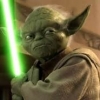Rules Question:
I am trying to understand the borders of what Pilot Vader's ability blocks and does not block in terms of constant abilities.
There is a post with a response from Erik (in case it isn't Erik who responds here) that summarizes: "The important difference between the two type is whether the constant appears to be “waiting†for a particular game moment before it does something or if it is just checking some condition to give a bonus. The former are constants that initiate, while the latter are not."
Are there any parts of Preparation for Battle that initiate? When a unit gets shielded? When the dial hits 8 or higher? This one seems like Vader would not block it (although he could potentially block a shield from being placed).
Secret Informant? Understanding that Vader blocks Fate Cards from resolving, but for the sake of argument say that one did, would Secret Informant be able to use her constant effect?
Another way of asking, I am wondering if Vader blocks any constant effect that could easily be rewritten as a "Reaction" or "Interrupt". Secret Informant could easily say, "While this unit is participating in an engagement, it gains the ability, 'Reaction: After a fate card in your edge stack resolves, resolve the effects an additional time'".
So the first part of SI does not initiate even though there might be a point in time where SI goes from an non-participant state to a participant state, but the second part does initiate because it is waiting for a game moment (i.e. a fate card in your edge stack to resolve). Preparation for Battle I don't see as being able to be rewritten since it is just checking to see if any unit is shielded and where the death star dial is at the time.
Does that reasoning work? Are there instances where this reasoning does not apply? Something else I'm not seeing?
Thanks.
Response:
This is a tricky question as each constant ability is a little different (they have less structure than Reactions or Interrupts, so they’re a bit harder to classify).
Constant passive abilities that have points of initiation will tend to use words such as “at, after, when, etc†that tell you at what point that ability initiates. Subzero Defenses is the poster-child example of this case “…after its strike resolves†tells you precisely when to initiate the constant ability in question.
Constant passive abilities that don’t initiate will tend to use the word “while†or the phrase “for each†or similar. These passives constantly check the board state to see if their condition is met to be active, or to check a particular game state value to update a statistic on the card. These abilities don’t initiate when the condition becomes true or when the looked for statistic updates, they simply adjust to the new game state conditions.
Echoes Yoda is a great example of one case of this type of constant passive ability; his constant ability checks what the value on the Death Star dial is and gives him the appropriate number of unit damage icons. This ability never initiates, but updates accordingly when the dial changes.
Preparation for Battle is another version of the Yoda example. The constant abilities on this objective constantly check to see if the value of the Death Star dial meets a certain value to meet a true/false conditional. These abilities don’t initiate when that value is met, the conditional is simply true and the constant ability provides the listed bonus. (Note that both constant abilities on that objective use the term “while.â€)
The Secret Informant case is a bit trickier. It uses the term “while†but not for the part of the constant ability that is relevant to the interaction with Vader’s pilot ability. The text of this constant ability does use the phrase “resolve…an additional time†which is a word that would give you a clear point at which the constant passive would initiate. The Secret Informant’s constant ability would initiate at the point at which you have just finished resolving a fate card in your edge stack. Vader’s ability stopped you from initiating the fate card the first time, and Vader’s ability would stop you from initiating the Secret Informant’s ability (even though not resolving the fate card the first time means you couldn’t use that ability on the Secret Informant anyway).
The presence of “at/after/when†and “while/for each†don’t guarantee that a constant passive ability initiates or not, respectively, but they should give you a good guideline for how to parse them. If you do have any questions as to a particular constant ability, submit a question for it through this rules submission form and I will answer as soon as I am able.
Thanks.



 Sign In
Sign In Create Account
Create Account



 Back to top
Back to top














